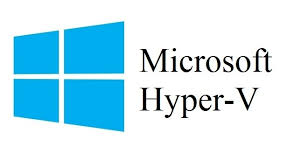As I wrote in my previous article, managing Hyper-V from PowerShell is quite easy. You can:
- create,
- configure,
- and manage your virtual machines with few command lines.
First thing, you need to install the Hyper-V PowerShell module.
Now, you can run the New-VM PowerShell cmdlet as below:
PS C:\> New-VM -Name VMTestNicolas `
-Path "C:\ProgramData\Microsoft\Windows\Hyper-V\Virtual Machines" `
-NewVHDPath "C:\ProgramData\Microsoft\Windows\Hyper-V\Virtual Hard Disks\VMTestNicolas.VHDX" `
-NewVHDSizeBytes 25GB `
-Generation 2 `
-MemoryStartupBytes 1GB `
-SwitchName LAN
Name State CPUUsage(%) MemoryAssigned(M) Uptime Status Version
---- ----- ----------- ----------------- ------ ------ -------
VMTestNicolas Off 0 0 00:00:00 Operating normally 7.0
Let’s check if the VM is created with GUI:

or with PowerShell:
PS C:\> get-vm Name State CPUUsage(%) MemoryAssigned(M) Uptime Status Version ---- ----- ----------- ----------------- ------ ------ ------- VMTestNicolas Off 0 0 00:00:00 Operating normally 7.0 Windows 7 Off 0 0 00:00:00 Operating normally 7.0 Windows 8.1 Running 0 590 7.13:11:45.8200000 Operating normally 7.0 Windows10 Off 0 0 00:00:00 Operating normally 7.0
Now, we will check the network settings (SwitchName is LAN):
PS C:\> get-vm -Name VMTestNicolas | Get-VMNetworkAdapter
Name IsManagementOs VMName SwitchName MacAddress Status IPAddresses
---- -------------- ------ ---------- ---------- ------ -----------
Network Adapter False VMTestNicolas LAN 000000000000 {}
Check the VHDX path (C:\ProgramData\Microsoft\Windows\Hyper-V\Virtual Hard Disks\VMTestNicolas.VHDX):
PS C:\> get-vm -Name VMTestNicolas | Get-VMHardDiskDrive VMName ControllerType ControllerNumber ControllerLocation DiskNumber Path ------ -------------- ---------------- ------------------ ---------- ---- VMTestNicolas SCSI 0 0 C:\ProgramData\Microsoft\Windows\Hyper-V\Virtual Hard Disks\VMTestNicolas.VHDX
Check the Startup Memory (1GB):
PS C:\> get-vm -Name VMTestNicolas | Get-VMMemory VMName DynamicMemoryEnabled Minimum(M) Startup(M) Maximum(M) ------ -------------------- ---------- ---------- ---------- VMTestNicolas True 512 1024 1048576
Check the VM Generation (VM Gen 2):
PS C:\> get-vm -Name VMTestNicolas | select VirtualMachineSubType
VirtualMachineSubType
---------------------
Generation2
Thanks for reading! You can follow me on Twitter @PrigentNico

